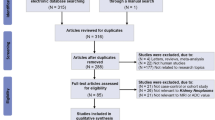Abstract
Purpose
This study aimed at exploring the feasibility of high-field diffusion-weighted magnetic resonance imaging (DW-MRI) (3 T) and to correlate apparent diffusion coefficient (ADC) values with tumour cellularity in renal malignancies.
Materials and methods
Thirty-seven patients (ten healthy volunteers and 27 patients with suspected renal malignancy) underwent T1-, T2-weighted and T1-weighted contrast-enhanced magnetic resonance imaging (MRI). Diffusion-weighted images were obtained with a single-shot spin-echo echo-planar imaging (SE-EPI) sequence with a b value of 500 s/mm2. All lesions were surgically resected, and mean tumour cellularity was calculated. Comparison between tumour cellularity and mean ADC value was performed using simple linear regression analysis.
Results
The mean ADC value in normal renal parenchyma was 2.35±0.31×10−3 mm2/s, whereas mean ADC value in renal malignancies was 1.72±0.21×10−3 mm2/s. In our population, there were no statistically significant differences between ADC values of different histological types. The analysis of mean ADC values showed an inverse linear correlation with cellularity in renal malignancies (r=−0.73, p<0.01).
Conclusions
DW-MRI is able to differentiate between normal and neoplastic renal parenchyma on the basis of tissue cellularity.
Riassunto
Obiettivo
Valutare l’utilità dell’imaging RM ad alto campo (3T) con sequenze pesate in diffusione (DWI) nello studio delle neoplasie renali e correlare i valori del coefficiente apparente di diffusione (ADC) con la cellularità delle neoplasie.
Materiali e metodi
Trentasette pazienti (10 volontari sani e 27 con lesioni renali sospette) sono stati studiati con imaging RM e sequenze T1, T2 pesate e T1 pesate dopo somministrazione di bolo di contrasto paramagnetico. Le immagini pesate in diffusione (DWI) sono state acquisite con sequenza sSH SE-EPI e fattore b di 500 s/mm2. Per ogni lesione chirurgicamente asportata è stata valutata la cellularità media. L’analisi di regressione lineare semplice è stata utilizzata per valutare la correlazione fra cellularità tumorale e valore ADC.
Risultati
L’ADC medio nel parenchima dei pazienti sani è stato 2,35±0,31×10−3 mm2/s. Il valore medio nei tumori renali maligni era di 1,72±0,21×10−3 mm2/s. Non è stata riscontrata una differenza statisticamente significativa tra i valori medi di ADC dei differenti istotipi neoplastici. È stata documentata una correlazione inversa fra il valore medio di ADC e la cellularità media nei tumori renali maligni (r=−0,73, p<0,01).
Conclusioni
L’imaging in diffusione consente una distinzione significativa tra parenchima renale normale e neoplastico. È possibile differenziare i tessuti neoplastici sulla base della cellularità.
Similar content being viewed by others
References/Bibliografia
American Cancer Society (2006) Cancer Facts & Figures 2007. American Cancer Society, Atlanta
Parker GJM (2004) Analysis of MR diffusion weighted images. Br J Radiol 77:176–185
Leuthardt EC, Wippod FJ, Oswood MC, Rich KM (2002) Diffusion weighted MR imaging in the preoperative assessment of brain abscesses. Surg Neurology 58:295–402
Toyoshima S, Noguchi K, Seto H et al (2000) Functional evaluation of hydronephrosis by diffusion-weighted MR imaging. Relationship between apparent diffusion coefficient and split glomerular filtration rate. Acta Radiol 41:642–646
Chan JH, Tsui EY, Luk SH et al (2001) MR diffusion-weighted imaging of kidney: differentiation between hydronephrosis and pyonephrosis. Clin Imaging 25:110–113
Verswijvel G, Vandecaveye V, Gelin G et al (2002) Diffusion-weighted MR imaging in the evaluation of renal infection: preliminary results. JBR-BTR 85:100–103
Namimoto T, Yamashita Y, Mitsuzaki K et al (1999) Measurement of the apparent diffusion coefficient in diffuse renal disease by diffusion-weighted echoplanar imaging. J Magn Reson Imaging 9:832–837
Thoeny HC, De Keyzer F, Oyen RH et al (2005) Diffusion-weighted MR imaging of kidneys in healthy volunteers and patients with parenchymal diseases: initial experience. Radiology 235:911–917
Squillaci E, Manenti G, Cova M et al (2004) Correlation of diffusion-weighted MR imaging with cellularity of renal tumours. Anticancer Res 24:4175–4179
Yamashita Y, Tang Y, Mutsumasa T (1998) Ultrafast MR imaging of the abdomen: echo planar imaging and diffusion weighted imaging. J Magn Reson Imaging 8:367–374
Ebisu T, Tanaka C, Umeda M et al (1996) Discrimination of brain abscess from necrotic or cystic tumors by diffusion-weighted echo planar imaging. J Magn Reson Imaging 14:1113–1116
Cova M, Squillaci E, Stacul F et al (2004) Diffusion-weighted MRI in the evaluation of renal lesions: preliminary results. Br J Radiol 77:851–857
Squillaci E, Manenti G, Di Stefano F et al (2004) Diffusion-weighted MR imaging in the evaluation of renal tumours. J Exp Clin Cancer Res 23:39–45
Muller MF, Prasad PV, Siewert B et al (1994) Abdominal diffusion mapping with use of a whole-body echo-planar system. Radiology 190:475–478
Muller MF, Prasad PV, Bimmler D et al (1994) Functional imaging of the kidney by means of measurement of the apparent diffusion coefficient. Radiology 193:711–715
Siegel CL, Aisen AM, Ellis JH et al (1995) Feasibility of MR diffusion studies in kidney. J Magn Reson Imaging 5:617–620
Fukuda Y, Ohashi I, Hanafusa K et al (2000) Anisotropic diffusion in kidney: apparent diffusion coefficient measurements for clinical use. J Magn Reson Imaging 11:156–160
Herneth AM, Guccione S, Bednarski M (2003) Apparent diffusion coefficient: a quantitative parameter for in vivo tumor characterization. Eur J Radiol 45:208–213
Author information
Authors and Affiliations
Corresponding author
Rights and permissions
About this article
Cite this article
Manenti, G., Di Roma, M., Mancino, S. et al. Malignant renal neoplasms: correlation between ADC values and cellularity in diffusion weighted magnetic resonance imaging at 3 T. Radiol med 113, 199–213 (2008). https://doi.org/10.1007/s11547-008-0246-9
Received:
Accepted:
Published:
Issue Date:
DOI: https://doi.org/10.1007/s11547-008-0246-9
Keywords
- Renal neoplasms
- Diffusion-weighted magnetic resonance imaging (DW-MRI)
- Apparent diffusion coefficient (ADC)
- 3-T MRI




